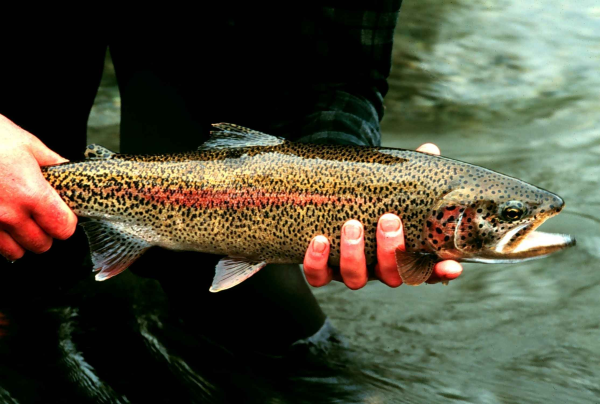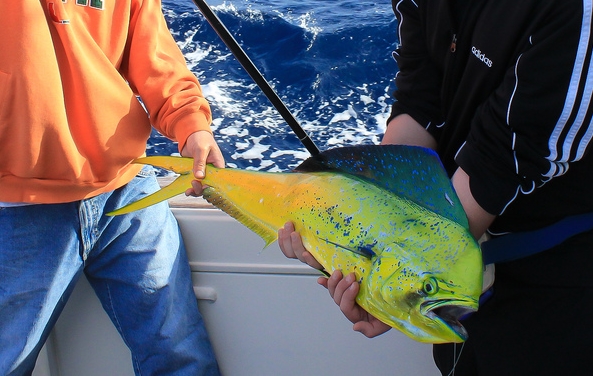The best part of ice fishing has to be the hut. Ice fishing provides some of the best opportunities to catch big fish all year. Not only has traffic on the lakes dropped significantly, but fish tend to huddle in specific areas where water temperatures are consistent and food supplies plentiful.
Ice fishing huts can be as simple as three poles and a tarp tied together to break the wind or a fully equipped house on ice with bunk beds, microwave oven, wood or propane stoves and pretty much any other modern convenience you can think of.
Building a portable shelter is also a fairly simple project to build over a weekend or two before the ice fishing season opens. Be sure to check with your local authorities to make sure you are up to date on any restrictions which may affect your hut before you start building.
The most important aspect of any ice hut is weight. Try to keep the total weight of the hut as low as possible (ideally less than 100lbs) and try to keep the weight distributed over as many square feet as possible.
The hole drilled through the ice is usually 8” to 10” in diameter and a hole this size can weaken the ice near it so the larger the area you can spread the weight over the better. Ice thickness varies from place to place on a lake but generally ice that is a minimum 4” will support a human walking on it, 6” two people walking side by side, 8” will support an ATV or snowmobile and most ice fishing huts, and 12” or more will support most small vehicles.
However, these are only guidelines, check thoroughly for yourself based on how much weight you will be carrying and by what date you must have your hut off the ice in the spring.
A portable hut is designed to be towed behind an ATV or snowmobile over the frozen lake from hole to hole. The hut should also be able to slide into the back of a pick up truck for transport to and from your favourite fishing spot. A rough size of 4’ x 8’is an ideal minimum size but as long as the ice will hold, it is up to you how big you want to get.
A hut that is 8’ x 16’ is probably going to be a little on the heavy side and would be difficult to transport, but would be spacious enough for several people to stretch out and enjoy themselves.
Start by building a solid base. Use two 2” x 6” x 8’ (or longer) pieces of wood set on edge for the skis. Round off one edge on each 2” x 6” to resemble skis and attach cross braces 4’ wide spaced 24” apart. Attach the cross braces with 3” nails or wood screws. You can also use 90° elbow brackets for added strength. Some people attach the skis to old hardwood shipping pallets for a solid base. Various items such as rope, chains or custom tow bars can be used to drag your ice fish hut along the ice.
Once you have a solid base frame built, lay the floor down. Use ½” plywood ideally of an exterior grade or pressure treated. Cut a hole 12” x 12” in the middle of the shack floor. The hole in the floor will give you access to the hole in the ice. Save the piece that gets cut out from the floor for use as a trap door that can be closed when the shack is not in use. Attach the floor with 1 ¼” wood screws or nails.
The walls should be made from the lightest and strongest materials possible. 2” x 3” wall studs can be used to support the wall coverings of 1/4” exterior grade plywood. Use a 2” x 3” x 8’ laid flat for the top and bottom of the wall frame. The vertical studs can be cut to whatever height you want the ice fishing hut to be. Usually about 6’6” is enough. Attach the walls to the base with 3” nails or wood screws. Use 1” wood screws or nails to attach the wall coverings.
In one end of the ice fishing hut, using 2” x 3” studs frame in a door way 30” wide by 6’ tall. Cover the door with at least ¼” or ½” plywood. Use sturdy hinges and locking hardware as wind can catch the door quite easy on the open lake. In the other end of the shack frame in a window about 30” x 30” made from plexi glass to help keep things lightweight and shatter proof. Windows can also be installed in the other sides of the hut if desired.
The roof can be built from 2” x 3” studs set on edge for strength. Set the studs on enough of an angle so snow slides off easily. The easiest way is to make one wall taller than the other. Place the studs on top of the frame for the side walls and attach with 3” screws or nails. The shortest wall should be at the minimum height you want (about 6’6”) and the other wall must be slightly higher (about 7’6”).
Cover the roof joists with ¼” exterior grade plywood. You may have to cover the soffit area under the roof where it overhangs the walls to keep heat in and cold winds out depending on the design you choose. Use ¼” plywood to cover the soffits.
Exterior grade 1/4” plywood is moisture repellent, can be painted any colour, and fairly lightweight. Any covering which stops the wind and retains heat is fine to use. Some huts are covered with lightweight aluminum and occasionally treated canvas that is solid enough to stop the wind has been used. The most important part when designing and building a hut is to keep the wall coverings and other materials for the hut as lightweight as possible.
Once you have a ice fishing hut built, the furnishings can be as wild as your imagination. Most huts have room for at least two folding chairs and maybe a small table. You can also include bunk beds, a small wood stove for heating and cooking, and additional heat can be provided by solar panels mounted in the roof or walls.
There are many plans available for soda pop solar panels which would be ideal for adding some warmth to your hut. The roof can be covered in aluminum instead of heavy shingles and the walls can be insulated with lightweight Styrofoam to help retain warmth. If you are going to build an ice fishing hut, make sure to give it your own identity for fun and to give you something to talk about with your fishing buddies on the days when the fish don’t seem to be biting.
Copyright 2019 Mike Wilson






